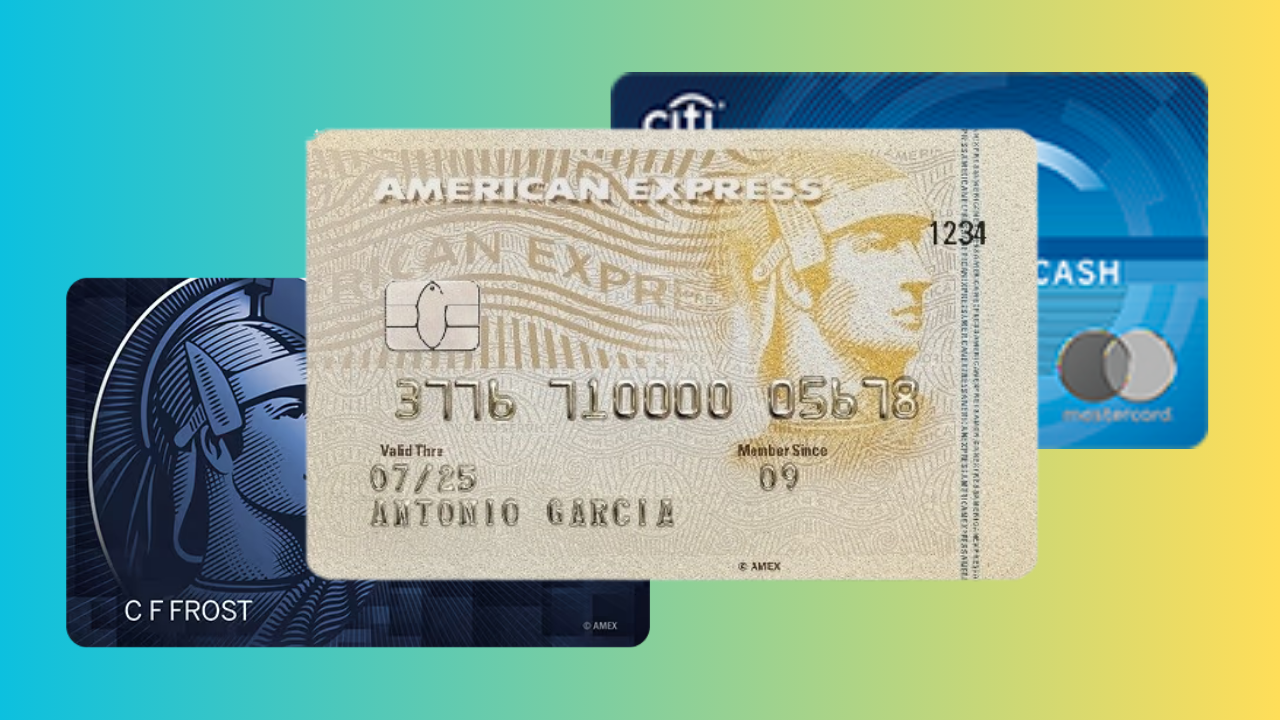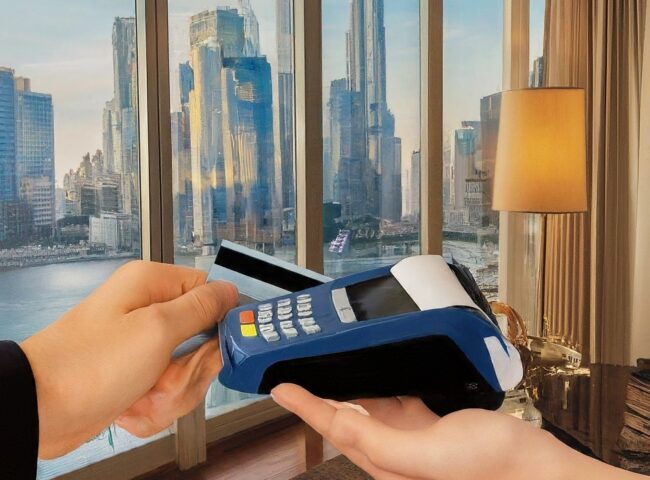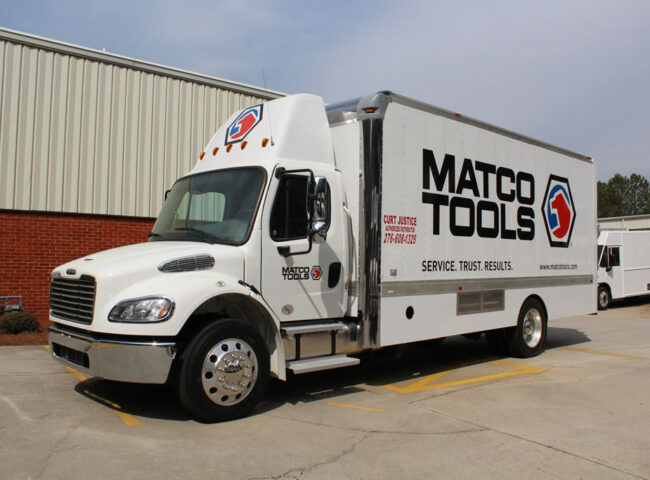Introduction
Do you ever feel like you’re constantly shelling out money for gas and groceries? You’re definitely not alone! For most households, these two categories often make up the biggest chunks of monthly expenses. But what if there was a way to put some of that money back in your pocket?
That’s where credit cards designed for gas and grocery rewards come in. These handy financial tools can turn your everyday spending into significant savings. Whether you prefer cash back, points, or a combination of benefits, the right credit card can make a noticeable difference in your budget.
In this comprehensive guide, we’ll dive into everything you need to know about the best credit cards for gas and groceries. We’ll explore different reward types, essential features to consider, our top card picks, and even some tips on how to maximize your savings. By the end, you’ll be equipped to find the perfect card to supercharge your savings on everyday essentials.
Let’s get started!
Why You Need a Credit Card for Gas and Groceries
If you’re a regular shopper and driver (and who isn’t these days?), getting a credit card optimized for gas and groceries is a no-brainer. Here’s why:
- Direct Savings: The most obvious benefit is the direct savings you’ll enjoy. Cash back rewards put money back in your wallet, while points can be redeemed for travel, merchandise, or even statement credits.
- Building Credit: For those new to credit or working on rebuilding their credit score, using a credit card responsibly is a fantastic way to boost your creditworthiness.
- Extra Perks: Many of these cards go beyond just rewards. You might find additional benefits like discounts at partner stores, extended warranties on purchases, or even travel insurance when you book trips with your card.
Imagine paying for your weekly groceries and your next tank of gas, and then getting a percentage of that money back. That’s real, tangible savings you can use for other things you enjoy.
But how do you know which card is right for you? That’s what we’ll tackle in the next sections. We’ll break down the different types of rewards, key features to look for, and our top picks for the best credit cards to save you money on gas and groceries.
Types of Rewards for Gas and Grocery Credit Cards
So, what kind of rewards can you actually get from a credit card designed for gas and groceries? Let’s break down the main types:
1. Cash Back: This is the most straightforward option. You earn a percentage of your spending back as cash. For example, a card might offer 3% cash back on gas and groceries, and 1% cash back on everything else. This cash can be redeemed as a statement credit, deposited into your bank account, or even sent to you as a check.
2. Points: Many cards offer rewards in the form of points. You earn a certain number of points per dollar spent, and these points can be redeemed for a variety of things:
- Travel: This is a popular option, allowing you to book flights, hotels, and other travel expenses.
- Merchandise: You can often redeem points for electronics, household goods, gift cards, and more.
- Cash Back: Some cards let you convert your points into cash back, giving you flexibility.
3. Bonus Categories: Some cards have bonus categories that earn higher rewards rates on specific types of purchases. Gas and groceries are common bonus categories, meaning you might earn a higher percentage back on these purchases than you would on other categories.
4. Welcome Bonuses: To entice new cardholders, many cards offer welcome bonuses. These are typically awarded after you spend a certain amount within the first few months of having the card. For example, you might get a $200 cash back bonus after spending $1,000 in the first three months.
Which Type of Reward is Best?
The best type of reward depends on your individual preferences and spending habits.
- If you like simplicity and want to see immediate savings, cash back is a great option.
- If you enjoy travel or like having the flexibility to choose from different redemption options, points might be a better fit.
- If you have a large upcoming expense (like a vacation), a card with a big welcome bonus could be a smart choice.
Example:
| Card Name | Reward Type | Rewards Rate | Annual Fee | Welcome Bonus |
|---|---|---|---|---|
| Blue Cash Preferred® Card from American Express | Cash back | 6% on groceries, 3% on gas | $95 | $300 cash back after spending $3,000 in the first 6 months |
| Citi Custom Cash® Card | Cash back | Up to 5% on rotating categories | $0 | $200 cash back after spending $750 in the first 3 months |
drive_spreadsheetExport to Sheets
As you can see, even within the same category (cash back), there can be big differences in rewards rates, annual fees, and welcome bonuses. It’s important to compare different cards and choose one that aligns with your spending patterns and financial goals.
Key Features to Look For in a Gas and Grocery Credit Card
Alright, now that you have a good grasp of the different rewards you can earn, let’s dive into the specific features you should be looking for when comparing gas and grocery credit cards.
1. Rewards Rate: This is the core of any rewards credit card. The rewards rate is the percentage of your spending that you earn back in rewards. For gas and groceries, you want to find a card with a high rewards rate on these categories. Some cards even offer rotating bonus categories, where you can earn a higher rate on gas and groceries during specific quarters of the year.
2. Annual Fee: Many credit cards with premium rewards come with an annual fee. While it might be tempting to go for a card with no annual fee, it’s important to weigh the cost of the fee against the potential rewards you could earn. If you spend enough on gas and groceries, a card with an annual fee might actually be more beneficial in the long run.
3. Interest Rate (APR): The annual percentage rate (APR) is the interest rate you’ll be charged if you carry a balance on your credit card. If you plan to pay off your balance in full each month, the APR won’t be a major factor. However, if you might occasionally carry a balance, look for a card with a lower APR to minimize interest charges.
4. Redemption Options: How you redeem your rewards can significantly impact their value. Some cards offer a wide range of redemption options, like travel, merchandise, gift cards, and cash back. Others may limit you to a specific type of reward. Choose a card with redemption options that align with your preferences and lifestyle.
5. Foreign Transaction Fees: If you plan to use your credit card for purchases outside of your home country, be sure to check for foreign transaction fees. These fees can add up quickly, so it’s best to choose a card that waives them.
6. Additional Perks: Some credit cards offer extra perks beyond just rewards, such as:
- Purchase protection: Covers your purchases against damage or theft.
- Extended warranty: Extends the manufacturer’s warranty on eligible purchases.
- Travel insurance: Provides coverage for trip cancellation, lost luggage, and more.
- Concierge service: Helps you with travel arrangements, restaurant reservations, and other tasks.
Consider which additional perks are most valuable to you when comparing different cards.
Example: Comparing Features
| Card Name | Rewards Rate | Annual Fee | APR | Redemption Options | Additional Perks |
|---|---|---|---|---|---|
| Blue Cash Preferred® Card from American Express | 6% groceries, 3% gas, 1% other | $95 | 16.24% – 27.24% Variable | Cash back, travel, gift cards | Purchase protection, extended warranty |
| Citi Custom Cash® Card | Up to 5% on rotating categories | $0 | 15.74% – 25.74% Variable | Cash back | N/A |
| American Express® Gold Card | 4X points at restaurants, U.S. supermarkets | $250 | 16.99% – 23.99% Variable | Travel, merchandise, gift cards, cash back | Travel insurance, concierge service |
drive_spreadsheetExport to Sheets
As you can see, each card offers a unique combination of features and benefits. By carefully evaluating these features, you can find the card that best suits your spending habits and financial needs.
Top Credit Card Picks for Gas and Groceries
Now for the moment you’ve been waiting for: our top credit card picks that will help you save big on gas and groceries. Remember, the best card for you will depend on your individual spending habits and preferences.
1. Blue Cash Preferred® Card from American Express
Blue Cash Preferred® Card from American Express
- Rewards Rate: A standout for grocery shoppers, this card offers an impressive 6% cash back at U.S. supermarkets (on up to $6,000 per year in purchases, then 1%), 3% cash back at U.S. gas stations, and 1% on other purchases.
- Annual Fee: $95
- Welcome Bonus: Earn a $300 statement credit after you spend $3,000 in purchases on your new Card within the first 6 months.
- Why We Like It: The high cash back rate on groceries is hard to beat, making this card a fantastic choice for frequent grocery shoppers.
2. Citi Custom Cash® Card
Citi Custom Cash® Card
- Rewards Rate: Earn 5% cash back on your top eligible spend category each billing cycle (up to $500 spent), then 1% cash back on all other purchases. Gas stations are one of the eligible rotating categories.
- Annual Fee: $0
- Welcome Bonus: $200 cash back after you spend $750 in purchases within the first 3 months from account opening.
- Why We Like It: This card is a flexible option that automatically rewards you for your highest spending category each month, including gas when you fill up your tank frequently.
3. American Express® Gold Card
American Express® Gold Card
- Rewards Rate: Earn 4X Membership Rewards® Points at Restaurants, plus takeout and delivery in the U.S., and at U.S. supermarkets (on up to $25,000 per calendar year in purchases, then 1X).
- Annual Fee: $250
- Welcome Bonus: Earn 60,000 Membership Rewards® points after you spend $4,000 on eligible purchases with your new Card within the first 6 months of Card Membership.
- Why We Like It: While this card has a higher annual fee, the rewards on dining and U.S. supermarkets make it a good option for foodies who also enjoy eating out or ordering in.
Additional Options:
- Chase Freedom Flex℠: This card offers 5% cash back on rotating quarterly categories (which often include gas stations and grocery stores), up to $1,500 in combined purchases each quarter you activate.
- Bank of America® Customized Cash Rewards credit card: This card lets you choose a 3% cash back category, which can be gas or groceries, on up to $2,500 in combined choice category/grocery store/wholesale club purchases each quarter, then earn 1% on all other purchases.
Remember, these are just a few examples. Many other great credit cards offer excellent rewards for gas and groceries. It’s essential to do your research and compare different options before making a decision.
How to Choose the Right Card for You
With so many credit card options available, it can be overwhelming to choose the right one. Here’s a breakdown of the key factors to consider when making your decision:
1. Spending Habits:
- Analyze your spending: Track your monthly spending on gas and groceries. This will help you identify which card offers the highest potential rewards based on your specific spending patterns.
- Consider bonus categories: If your spending is concentrated in other areas, such as dining or travel, look for a card that offers bonus rewards in those categories as well.
2. Lifestyle:
- Do you travel frequently? If so, a card that offers travel rewards might be a better fit. You can earn points or miles on your gas and grocery purchases and redeem them for flights, hotels, and other travel expenses.
- Do you prefer simplicity? If you don’t want to deal with multiple cards or complex reward structures, a straightforward cash back card might be the best option.
- Do you value additional perks? If you prioritize perks like travel insurance, purchase protection, or concierge service, consider a premium card that offers these benefits.
3. Credit Score:
- Your credit score matters: Your creditworthiness will determine which cards you’re eligible for. Those with excellent credit will have access to cards with the highest rewards rates and most generous perks. However, there are also great options available for those with good or fair credit.
- Check your credit score: Before applying for any card, it’s a good idea to check your credit score. This will give you a realistic idea of which cards you’re likely to qualify for.
4. Fees vs. Rewards:
- Weigh the costs and benefits: Carefully compare the annual fee (if any) with the potential rewards you could earn. Use a rewards calculator to estimate your potential earnings based on your spending habits.
- Factor in welcome bonuses: Many cards offer lucrative welcome bonuses, which can offset the cost of an annual fee in the first year.
Tips for Choosing the Right Card:
- Use comparison tools: Many websites and financial institutions offer tools to compare different credit cards side-by-side. This can help you quickly evaluate the features and benefits of various cards.
- Read reviews: Check out online reviews from other cardholders to get insights into their experiences with different cards.
- Consider your priorities: Ultimately, the best card for you is the one that aligns with your spending habits, lifestyle, and financial goals. Don’t be afraid to prioritize the features that are most important to you.
By taking the time to carefully evaluate your options, you can find the perfect gas and grocery credit card to maximize your savings and reap the benefits of responsible credit card use.
Tips for Using Your Gas and Grocery Credit Card
Congratulations! You’ve found the perfect gas and grocery credit card and are ready to start saving. But how do you make the most of your new financial tool? Here are some essential tips:
1. Pay Your Balance in Full:
- The golden rule of credit card rewards is to avoid interest charges. To do this, always pay your balance in full every month. Otherwise, the interest you accrue will likely negate any rewards you earn.
- Set up automatic payments: Consider setting up automatic payments from your bank account to ensure you never miss a payment and avoid unnecessary fees.
2. Track Your Spending:
- Monitor your rewards: Keep track of the rewards you’re earning each month. Many credit card companies offer online tools or mobile apps that make it easy to see your rewards balance and redemption options.
- Identify spending patterns: By analyzing your spending habits, you can identify opportunities to optimize your rewards. For example, if you notice you’re not earning the maximum bonus on groceries, you might consider changing your shopping habits to maximize your earnings.
3. Combine with Other Cards:
- Maximize rewards across categories: If you have multiple credit cards, consider using them strategically to earn the highest rewards in different spending categories. For example, you could use your gas and grocery card for those specific purchases, and a different card with a high rewards rate for dining or travel.
- Be mindful of annual fees: If you decide to have multiple cards, be sure to factor in the annual fees for each card and ensure the rewards outweigh the costs.
4. Redeem Rewards Regularly:
- Don’t let rewards expire: Some credit cards have expiration dates for rewards, so be sure to redeem them before they become unusable.
- Choose the best redemption options: Consider the value of each redemption option and choose the one that offers the most value for your points or cash back.
- Look for bonus redemption offers: Many credit card companies offer bonus redemption offers, such as double points or miles when you redeem for travel during certain periods. Keep an eye out for these deals to maximize the value of your rewards.
Additional Tips:
- Sign up for alerts: Many credit cards offer alerts for upcoming payments, rewards balances, and special offers. These alerts can help you stay on top of your finances and maximize your rewards.
- Read the fine print: Be sure to read the terms and conditions of your credit card agreement carefully. This will help you understand any restrictions or limitations on rewards or benefits.
- Use your card responsibly: Always use your credit card responsibly and avoid overspending. Remember, credit cards are a tool, and it’s up to you to use them wisely.
By following these tips, you can ensure that your gas and grocery credit card is working hard for you, helping you save money on everyday essentials and achieve your financial goals.
FAQs: Your Burning Questions Answered
Q: Are credit card rewards for gas and groceries really worth it?
A: Absolutely! If you use your card responsibly and pay your balance in full each month, the rewards can add up significantly. Even a small percentage of cash back can save you hundreds of dollars annually on gas and groceries.
Q: Will using a gas and grocery credit card hurt my credit score?
A: It can actually help your credit score! Using your card responsibly and making on-time payments will demonstrate good credit behavior and positively impact your score. However, missing payments or carrying a high balance can have negative consequences.
Q: Should I get a credit card with an annual fee?
A: It depends on your spending habits and the value of the rewards offered. If the potential rewards outweigh the cost of the annual fee, it might be a worthwhile investment. Use a rewards calculator to estimate your potential earnings based on your spending patterns.
Q: What happens if I don’t pay my credit card bill in full?
A: If you don’t pay your balance in full, you’ll be charged interest on the remaining amount. This interest can quickly accumulate and negate any rewards you’ve earned. It’s crucial to pay your balance in full each month to avoid interest charges.
Q: Can I use multiple credit cards for gas and groceries?
A: Yes, you can use multiple credit cards to maximize rewards. Some people use different cards for different categories of spending. However, it’s important to keep track of multiple cards and ensure you’re not overspending.
Q: How often should I redeem my rewards?
A: It depends on the card’s terms and conditions. Some cards may have expiration dates for rewards, while others allow you to accumulate rewards indefinitely. It’s a good idea to redeem your rewards regularly to avoid losing them and to enjoy the benefits they offer.
Q: Are there any risks associated with using credit cards for gas and groceries?
A: The main risk is overspending. It’s easy to get carried away with rewards and end up spending more than you normally would. It’s important to set a budget and stick to it. Also, be mindful of the interest rate and fees associated with your card.
Conclusion
In conclusion, finding the best credit card for gas and groceries can significantly impact your savings. By carefully considering your spending habits, lifestyle, and credit score, you can choose a card that maximizes your rewards and benefits. Whether you prefer cash back, points, or a combination of perks, there’s a perfect card out there waiting for you.
Remember, the key to success with any credit card is responsible use. Pay your balance in full each month, track your spending, and redeem your rewards regularly. By following these tips, you can transform your everyday purchases into valuable rewards and achieve your financial goals.
Take the time to research different cards, compare their features, and choose the one that aligns with your needs and preferences. With the right card in your wallet, you can enjoy substantial savings on gas and groceries, freeing up more money for the things you truly enjoy.
So, what are you waiting for? Start your journey towards maximizing your rewards today!








Leave feedback about this